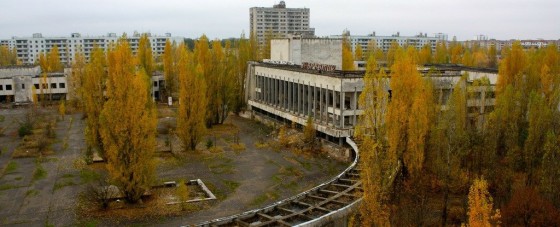Chernobyl Wasteland could be turned into Solar Energy Farm
Ain’t this some mash-up of atom-punk optimism and dystopian-rot wastelanding. The Ukrainian government is hoping to secure the funding to turn Chernobyl’s exclusion zone into a giant solar farm. So dope.
The Ukrainian government has announced a plan to turn the area surrounding Chernobyl – the site of one of the worst nuclear meltdowns in history – into a solar energy farm, by constructing a series of solar panels inside the exclusion zone.
Not only would this plan – which is currently seeking investment – allow the country to use a giant chunk of radioactive land that’s unfit for human settlement, it would also provide a cheaper source of reusable energy that might decrease the country’s reliance on Russia.
“The Chernobyl site has really good potential for renewable energy,” Ukraine’s environment minister Ostap Semerak said in an interview in London. “We already have high-voltage transmission lines that were previously used for the nuclear stations, the land is very cheap and we have many people trained to work at power plants.”
Thirty years ago, Chernobyl – a city roughly 100 kilometres (62 miles) from Kiev – was rendered toxic after a nuclear meltdown triggered a mass evacuation.
Now, all these years later, a large section of roughly 2,600 square kilometres (1,000 square miles) of land in and around Chernobyl is still unsuitable for human settlement.
So in an effort to make that land viable again, the government is attempting to fund the construction of a series of solar panels that, when finished, will provide roughly 4 megawatts of power for the country’s citizens. According to the California Energy Commission, 1 megawatt is enough to power 750 to 1,000 homes, so 4 megawatts could make a big difference for the Ukranian locals.
Besides a new source of clean power, the government also says the installation of the panels will hopefully decrease the country’s dependence on Russia, which supplies them heavily with natural gas, and further align them to join the European Union, which recently increased its focus on environmental issues.
“We have normal European priorities, which means having the best standards with the environment and clean energy ambitions,” Semerak told the press. “We want to be a successful Ukraine, to show people in the conflict zone that life is better and more comfortable with us.”
Right now, though, Ukrainian officials are trying to lock down the funds needed for the expensive project. They’re in talks with two US investment firms and four Canadian energy developers, reports Anna Hirtenstein for Bloomberg.




